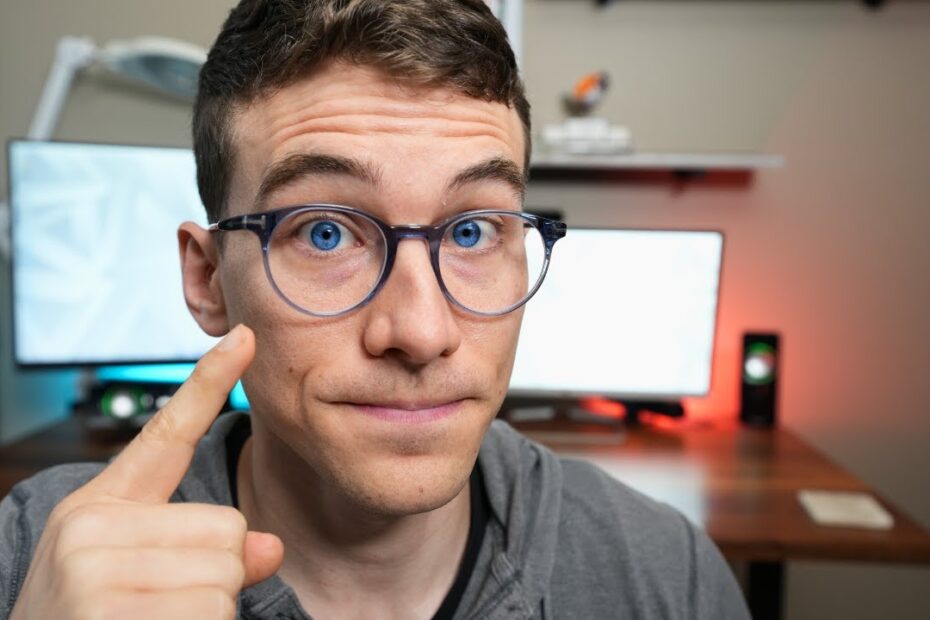Is there a difference in the quality of eyeglass lenses?
Oh, boy, if you think all eyeglass lenses are created equal, you’re in for a spectacle of surprises—pun absolutely intended! Picture this: slapping on a pair of bargain-bin lenses might leave you squinting at life’s finer details, like trying to read a menu in a dimly lit diner, while premium ones deliver crystal-clear vision that makes you feel like a superhero spotting villains from miles away. The real differences boil down to materials, coatings, and craftsmanship—think plastic versus high-index wonders that are lighter and thinner, or those fancy anti-reflective coatings that zap away glare faster than a cat dodges a bath. And let’s not forget how quality impacts durability; a top-tier lens won’t scratch as easily, saving you from that awkward “I just rubbed my glasses on my shirt” moment.
When it comes to what actually sets these lenses apart, here’s a quick rundown of factors that could make or break your peepers’ party:
- Material choices, like polycarbonate for toughness or high-index for slim designs, because nobody wants lenses thicker than a brick.
- Coatings for UV protection or blue-light blocking, turning your glasses into a shield against sneaky screen time side effects.
So, yeah, the quality gap is real, and picking wisely means less fumbling and more fabulous views—your eyes will thank you with a wink!
What is better, 1.67 or 1.74 index lenses?
When it comes to the eternal showdown between 1.67 and 1.74 index lenses, it’s like choosing between a trusty sidekick and a superhero—both get the job done, but one might make your frames look less like you’re smuggling potatoes behind your ears. The 1.67 index lenses are the crowd-pleasers for folks with moderate prescriptions, offering a solid balance of thinner design and affordability without turning your wallet into a sad, empty echo chamber. Meanwhile, the 1.74 index beasts step in for higher prescriptions, flexing their ultra-thin muscles to keep things lightweight and sleek, though they might charge you an arm and a leg for that extra edge in the vision game.
To break it down without boring you to tears, here’s a quick rundown of what sets these two apart:
- Thickness: 1.67 lenses are noticeably slimmer than standard ones but still bulkier than 1.74, which are like the ninjas of eyewear—stealthy and barely there.
- Weight: Both are lighter than your average lens, but 1.74 takes the cake for featherweight glory, making long days feel less like you’re wearing bricks on your face.
- Cost: 1.67 is the budget-friendly option, while 1.74 might have you questioning if it’s worth the premium for that extra thinness pizzazz.
Which lens brand is best for glasses?
Deciding which lens brand is best for glasses is like picking your favorite kid—everyone’s got an opinion, but let’s face it, Essilor often struts in as the overachiever of the bunch, with its fancy coatings that promise to shield your eyes from everything short of a zombie apocalypse. You might chuckle at how Zeiss lenses act like the cool, precision-engineered sidekick, making your world sharper than a comedian’s one-liner, while Nikon lenses play the reliable buddy who won’t break the bank but still deliver that crisp vision without the drama. It’s all about weighing factors like durability, UV protection, and whether you want lenses that make you look like a spy or just a regular Joe squinting at fine print.
Now, if you’re scratching your head over options, here’s a quirky rundown of top contenders to consider, because who needs a crystal ball when you’ve got glasses?
- Essilor: Great for anti-glare tech that laughs in the face of glare from your phone at 2 a.m.
- Zeiss: Perfect if you fancy German engineering that turns blurry chaos into crystal-clear comedy.
Ultimately, the “best” boils down to your lifestyle—do you want lenses that handle adventures or just survive your Netflix binges without smudges?
Who makes the highest quality progressive lenses?
When it comes to progressive lenses that won’t leave you squinting like a pirate searching for buried treasure, the real MVPs are the brands that blend cutting-edge tech with eyeball-friendly comfort. Picture this: you’re trying to read a menu or spot a distant landmark, and these lenses make it happen without that awkward head-tilting dance. Top contenders like Essilor, Zeiss, and Hoya consistently top the charts for their precision engineering and durability, turning blurry woes into crystal-clear wins with a wink and a nod.
Diving deeper, these lens makers stand out because they prioritize things like personalized fitting and advanced coatings that fight off smudges and glare—essential for anyone who’s ever mistaken a cat for a hat. Here’s a quick rundown of the key players who deliver the goods:
- Essilor, with their Varilux line that’s like a superhero cape for your eyes, offering seamless transitions.
- Zeiss, known for innovative designs that feel custom-made, even if you’re just a regular Joe.
- Hoya, dishing out lenses that adapt like chameleons to your lifestyle without skipping a beat.
